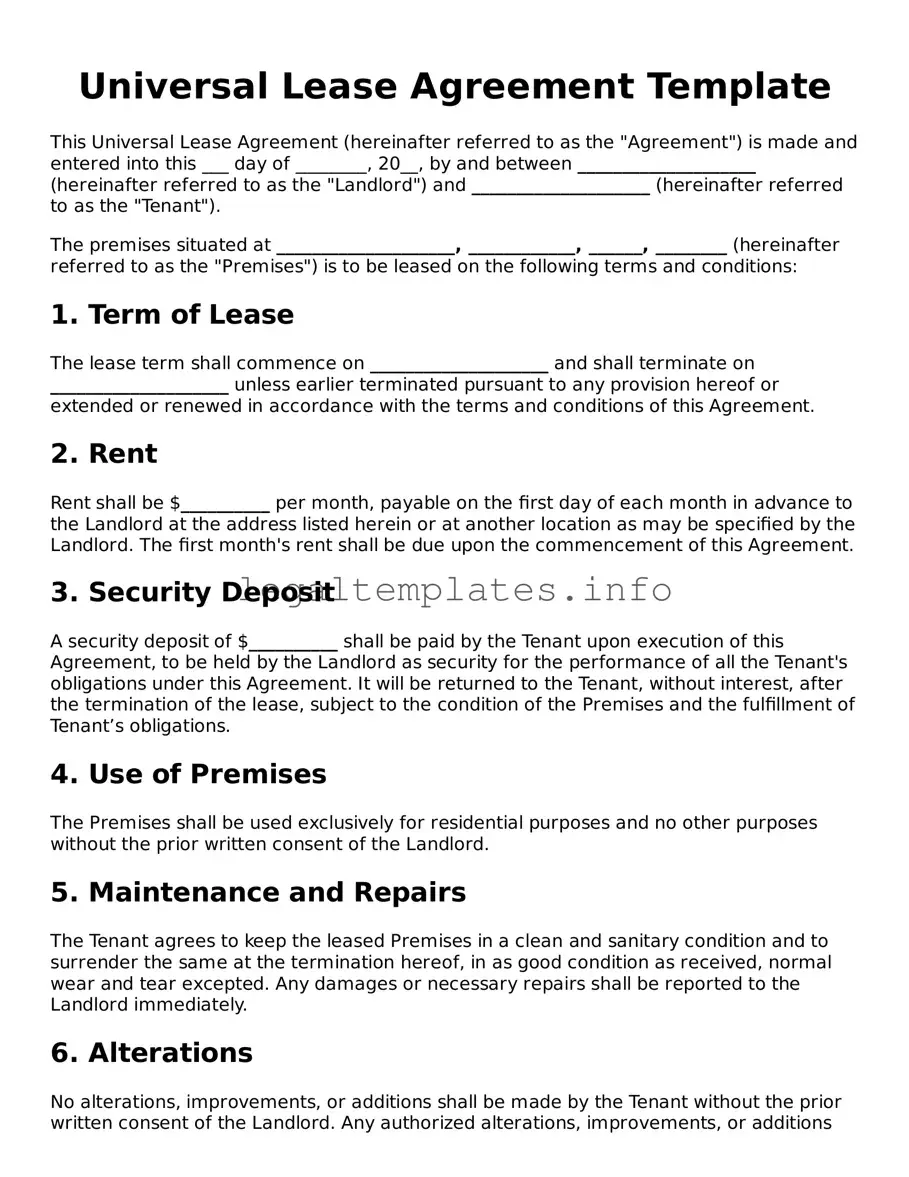Universal Lease Agreement Template
This Universal Lease Agreement (hereinafter referred to as the "Agreement") is made and entered into this ___ day of ________, 20__, by and between ____________________ (hereinafter referred to as the "Landlord") and ____________________ (hereinafter referred to as the "Tenant").
The premises situated at ____________________, ____________, ______, ________ (hereinafter referred to as the "Premises") is to be leased on the following terms and conditions:
1. Term of Lease
The lease term shall commence on ____________________ and shall terminate on ____________________ unless earlier terminated pursuant to any provision hereof or extended or renewed in accordance with the terms and conditions of this Agreement.
2. Rent
Rent shall be $__________ per month, payable on the first day of each month in advance to the Landlord at the address listed herein or at another location as may be specified by the Landlord. The first month's rent shall be due upon the commencement of this Agreement.
3. Security Deposit
A security deposit of $__________ shall be paid by the Tenant upon execution of this Agreement, to be held by the Landlord as security for the performance of all the Tenant's obligations under this Agreement. It will be returned to the Tenant, without interest, after the termination of the lease, subject to the condition of the Premises and the fulfillment of Tenant’s obligations.
4. Use of Premises
The Premises shall be used exclusively for residential purposes and no other purposes without the prior written consent of the Landlord.
5. Maintenance and Repairs
The Tenant agrees to keep the leased Premises in a clean and sanitary condition and to surrender the same at the termination hereof, in as good condition as received, normal wear and tear excepted. Any damages or necessary repairs shall be reported to the Landlord immediately.
6. Alterations
No alterations, improvements, or additions shall be made by the Tenant without the prior written consent of the Landlord. Any authorized alterations, improvements, or additions shall become the property of the Landlord and shall remain upon, and be surrendered with, the Premises at the termination of this Agreement.
7. Governing Law
This Agreement shall be governed by and construed in accordance with the laws of the state in which the Premises is located, without giving effect to any principles of conflicts of law.
8. Entire Agreement
This Agreement constitutes the entire agreement between the parties and supersedes all prior discussions, agreements, or understandings of any kind.
9. Amendment
This Agreement may be amended or modified only by a written agreement signed by both parties.
10. Signatures
IN WITNESS WHEREOF, the parties have executed this Lease Agreement as of the date first above written.
LANDLORD: _______________________________________
TENANT: _________________________________________
Please note that this template may require modification to suit your specific needs and the requirements of local laws. It is recommended to consult with a legal professional or real estate expert in your area to ensure compliance and adequacy of this Agreement before use.
